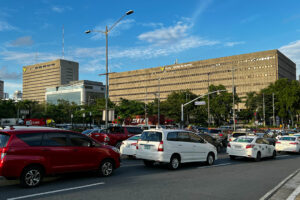Bangko Sentral ng Pilipinas: Declaring Independence
On Aug. 15, the Bangko Sentral ng Pilipinas (BSP) declared its independence. No, not from the Philippine government.

(This article is based on the research undertaken by the Research Team of Regina Capital Development Corp., a member of the Philippine Stock Exchange.)
On Aug. 15, the Bangko Sentral ng Pilipinas (BSP) declared its independence. No, not from the Philippine government. The charter of the BSP mandates that the BSP operate as an independent and accountable body that enjoys fiscal and administrative autonomy despite being a government corporation. Both our executive and legislative bodies have scrupulously and wisely respected this mandate.
We are referring to the US Federal Reserve Board (US Fed). By lowering the interest rate ahead of the US Fed, the BSP declared that henceforth Philippine monetary policy will be decided by the Philippine Monetary Board and not by the US Fed.
Ever since the US Fed started raising interest rates to combat inflation, the BSP has followed slavishly except for one instance. In that one instance, the peso rapidly depreciated and the BSP immediately followed the US Fed in raising interest rates.
It is therefore initially puzzling that based on this incident and despite the warnings of several economists, the BSP still reduced interest rates ahead of the US Fed. This puzzle was cleared when BSP Governor Eli Remolona, Jr. declared that delaying the easing of interest rates would dampen economic growth.
This declaration of the BSP Governor meant that:
1.) The objective of the BSP has shifted from containing inflation to stimulating growth (that the BSP recently reduced the Reserve Requirement Ratio or RRR from 9.5% to 7% thus releasing an additional P300 billion for the banks to lend further proves that the BSP is focused on stimulating growth); and that,
2.) In pursuit of this objective, the BSP is willing for the peso to depreciate and for inflation to increase.
As background, the famous economist John Maynard Keynes was the first to suggest that government should intervene in managing the economy. Previous to that the conventional wisdom was for the government to do nothing as the economy will sort itself out. The Great Depression and Keynes challenged that assumption.
According to Keynes, the government could intervene through its monetary and fiscal agencies. The monetary agencies, led by the Chairman of the Monetary Board as well as its members, would stabilize the monetary situation by deftly managing the interest rates, the exchange rates, and the inflation rates. The fiscal agencies, led by the Treasury Secretary, could stimulate the economy by targeting a fiscal deficit to stimulate the economy or restrain the economy by targeting a fiscal surplus.
In reality, while the monetary authorities could move promptly and decisively, the fiscal authorities, who need the approval of Congress, are not in a position to do so. Not only will it take time to explain the need for fiscal action but also to obtain its approval. More so, given the tendency of Congress to approve expenditures in excess of revenues, the chances of achieving a fiscal surplus are nil. Nay, there is even the risk, as argued by some economists, that President Biden went into deficit spending even when the economy had already recovered, thus fueling inflation. In the case of the Philippines, Finance Secretary Ralph Recto projects fiscal deficits up to 2028 no matter the condition of the Philippine economy.
For this reason, the job of stimulating or restraining the economy has fallen to the monetary authorities. This is in addition to maintaining monetary stability. They do this by lowering interest rates to stimulate the economy and by raising interest rates to restrain the economy. (In the case of the Philippines, the BSP also has the option to increase or decrease the RRR of the banks.)
Our BSP Governor is therefore faced with two major, sometimes conflicting objectives, restrain inflation and stimulate the economy. By his decision to lower interest rates despite the fact that the July inflation rate of 4.4% was above the target rate of 2-4%, he has accepted a possible higher inflation rate.
The inflation rate could increase due to two factors. One is that if the US Fed does not lower their interest rate, the peso could depreciate against the dollar, thereby causing inflation. The other is that the economy overheats and inflation ensues.
This willingness to weaken the peso also reflects the thinking of a certain group of economists.
These economists cite the economic success of Japan, China, and, most recently, Türkiye (or Turkey) in growing their economies by weakening their currencies. In an article in the Economist dated July 21, 2022, the paper asks: “How has Turkey’s economy kept growing despite raging inflation?” (Türkiye’s economy grew by 11% in 2021.) And the answers of the Economist article are echoed by these economists. They include, among others, Türkiye being a consumer driven economy, and Türkiye having overseas workers mostly in Germany and a surging tourism industry. Türkiye is the only European country where Russian tourists are welcome.
A devalued peso will benefit our Overseas Filipino Workers (OFWs). The dollars that they remit to their families will be exchanged for more pesos, thus fueling consumption. This is of course based on the assumption that the peso depreciation rate will be higher than the inflation rate.
Depreciation’s effect on our BPOs, in addition to their higher peso earning, is that it will also make them more competitive with BPOs from other countries especially India. There was a time when our BPOs became uncompetitive when the peso appreciated. From being at the same level as the Philippine peso, the India rupee is now trading at 84 rupees to the US dollar.
Just as a depreciating Japanese yen stimulated the Japanese tourism industry, so will a depreciating Philippine peso stimulate the Philippine tourism industry. These economists point out that tourism is labor intensive and develops in the hinterlands rather than in the cities, i.e., Boracay, El Nido, and Panglao rather than Metro Manila. In fact, they attribute the recent decline in unemployment and under employment rates to the revival of Philippine tourist arrivals to pre-pandemic levels.
When the interest rate is decreased by the BSP and higher inflation ensues, the real interest usually turns negative. The real interest rate is the nominal interest rate minus the inflation rate. When the nominal interest rate is lowered and the inflation rate increases, the real interest rate does not adjust correspondingly and so turns negative. This situation encourages companies to expand as their cost of borrowing is negative. This expansion stimulates the economy, raising the GDP.
Real negative interest rates favor borrowers considering that they, in effect, are paid to borrow. Not only that, inflation also lowers the real value of their debt. The main beneficiary is the Philippine government as it is the biggest borrower in the Philippines. Of the estimated P15.48-trillion debt of the Philippine government, 70% or P10.84 trillion is denominated in pesos. This debt will now pay a lower interest rate contributing immensely to reducing the fiscal deficit. Moreover, the real value of the nominal debt of P10.84 trillion will be eroded by inflation. (With respect to the foreign debt of the Philippine government, there are no clear indications on whether the impact will be neutral or negative.)
Moreover, inflation benefits governments like the Philippines as inflation increases the tax collection of the government given those goods will be priced higher for the same products. In addition, inflation also bumps taxpayers up to higher income brackets. Thus, even if they are earning the same based on real income consideration, they now pay higher taxes.
Inflation also encourages consumers to consume more. Anticipating the prices for durable goods and real estate to rise due to inflation, they advance their purchasing decisions and so stimulate the economy. Moreover, the probability that real interest rate will be negative allows them to obtain loans to finance their purchases.
By the way, disinflation has the opposite effect; consumers postpone their buying decisions expecting prices to decline in the future. Thus, disinflation leads to recession. Economists consider fighting disinflation much more difficult than fighting inflation. Thus, their inflation targets are always above zero (0-2% for the US Fed and 2-4% for the BSP), just to avoid the fight against inflation becoming too successful and leading to disinflation.
For these reasons, the BSP Governor could confidently pursue lowering interest rates given that the adverse consequences of such a move may be more than offset by the beneficial consequences.
Be that as it may, the BSP Governor, as the Chief Monetary Officer of the Philippine economy, has made a major public policy decision. It is then up to us, the financial players, to craft the appropriate financial or investment strategy under an environment of reduced interest rates, a depreciated currency, elevated inflation, and, hopefully, a higher economic growth rate.
Dr. Victor S. Limlingan is a retired professor of AIM and a fellow of the Foundation for Economic Freedom. He is presently chairman of Cristina Research Foundation, a public policy adviser and Regina Capital Development Corp., a member of the Philippine Stock Exchange.














